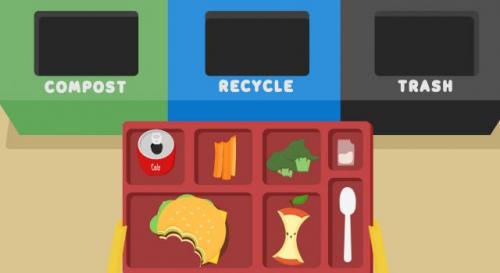
The computer animation is relatively modest – for good reason. Specifically, the 25 students taking CSE 198 with CSE Prof. Geoffrey Voelker decided that their interactive games should be designed not for college students, but for… third-graders. Why? According to project leader Danielle Tobey, it was because “research showed that the curriculum at that grade level begins to kids about habitat destruction.”
 Once they had decided to develop games for 8- to 9-year-olds, it became important to use simple animations as well as game rules and instructions that could be easily understood and followed by third-graders. Calling itself RecyCool, the team set out to teach the basics and the importance of recycling.
Once they had decided to develop games for 8- to 9-year-olds, it became important to use simple animations as well as game rules and instructions that could be easily understood and followed by third-graders. Calling itself RecyCool, the team set out to teach the basics and the importance of recycling.
San Diego County is aiming for zero waste by 2040, yet public schools do not teach kids about recycling. “Kids are sharp, keen, and fast learners, and we wanted to convey the various cool ways for students to recycle,” said Tobey, a graduating senior in Political Science. “I was fortunate enough to meet a group of talented, like-minded people who also wanted to make a difference, and over the past 10 weeks, together we’ve made incredible progress toward our vision.”
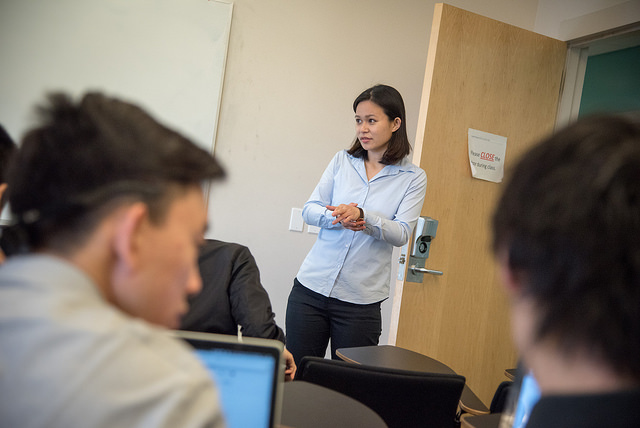 That vision, she added, is to “bring a fun and engaging recycling game into elementary-school classrooms in San Diego and beyond.” After recruiting fellow students on social media with her concept for the course, Tobey (pictured at left) petitioned for official credit as a CSE 198 Directed Group Study course, and Prof. Voelker agreed to oversee the Spring 2016 teams.
That vision, she added, is to “bring a fun and engaging recycling game into elementary-school classrooms in San Diego and beyond.” After recruiting fellow students on social media with her concept for the course, Tobey (pictured at left) petitioned for official credit as a CSE 198 Directed Group Study course, and Prof. Voelker agreed to oversee the Spring 2016 teams.
Students were divided into separate teams to work on different interactive mini-games, which were then bundled together in a single game environment. Nominally, CSE 198 is supposed to involve reading and discussion by a small group of students under the supervision of a faculty member. But given the proactive goal – to create games that third-graders would want to play and learn from – much of the class discussion focused on design and programming solutions.
According to Jason Davies, a fourth-year Computer Science major, the team opted to use the Unity game engine, in part because he had already used it. “I did training sessions to bring CS students up to speed on using Unity, so that all of the teams could handle programming of their own gameplay,” said Davies when the teams showcased their games on June 6, before finals week. Each student in the class was also required to play one of the mini-games.
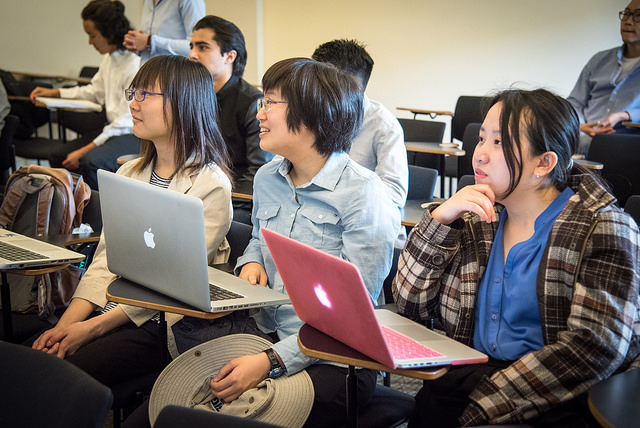 Each team was responsible for creating a game to get third-graders interested in recycling, and they were obliged to start from scratch. Since CSE 198 was open to students of all majors, only 12 out of 25 students were enrolled in the CSE department. Other students taking the course included majors in Biological Sciences, Business, Cognitive Science, Economics, Film and Visual Arts.
Each team was responsible for creating a game to get third-graders interested in recycling, and they were obliged to start from scratch. Since CSE 198 was open to students of all majors, only 12 out of 25 students were enrolled in the CSE department. Other students taking the course included majors in Biological Sciences, Business, Cognitive Science, Economics, Film and Visual Arts.
Ten students from CSE made up the cohort of developers of the interactive games. The group included three leaders, all majoring in Computer Science:: fourth-year Jason Davies, third-year Wes Okuhara, and second-year Karen Lo.
Another nine students with art backgrounds designed the game graphics from scratch under leaders Madeline Hsia and Sharmaine Manalo (the design lead). Both are sophomores in Cognitive Science specializing in Human-Computer Interaction. “I worked with artists on all of the games to pull together a uniform design aesthetic,” said Manalo, who is also minoring in Computer Science. “Since the ultimate goal involved pulling together all of the mini-games into a single program, having a uniform look was not just desirable, it was critical.”
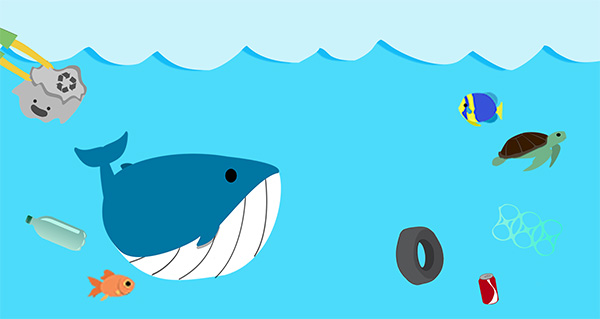 Students interested in music took charge of creating audio effects for the games as well as the musical accompaniment for each team’s gameplay. They included fourth-year ICAM major Soo Y. Chu, CS sophomore Gabriel Rangel, and freshman Math major Takahashi Taylor.
Students interested in music took charge of creating audio effects for the games as well as the musical accompaniment for each team’s gameplay. They included fourth-year ICAM major Soo Y. Chu, CS sophomore Gabriel Rangel, and freshman Math major Takahashi Taylor.
In one game, a player distributes pieces of trash into one of three “bins” labeled Compost, Recycle and Trash.. Another game lets players use a waste-paper basket to catch recyclables that are littering a park, or a player can drag a piece of trash and “jump” over an obstacle to stay ahead of a landfill monster. In all, the class was split into six teams to design three sub-games, while other teams worked on pulling them together.
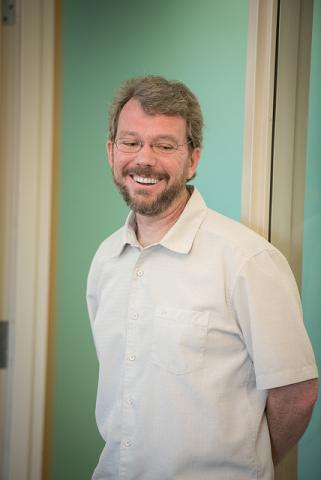 Project leader Danielle Tobey arranged to do ‘playtesting’ with 8- and 9-year-olds at Torrey Pines Elementary School, and she also surveyed elementary-school educators. Next up: she hopes to approach elementary schools around San Diego County to use the bundled recycling game as part of the curriculum in Earth Sciences. The team is also hoping to get major exposure after the Design Forward conference admitted “Cool Ways to Recycle” to the outdoor design showcase June 16-17. Design Forward is organized by the Design Lab at UC San Diego. The showcase is free and open to the public. (Prof. Voelker pictured at right.)
Project leader Danielle Tobey arranged to do ‘playtesting’ with 8- and 9-year-olds at Torrey Pines Elementary School, and she also surveyed elementary-school educators. Next up: she hopes to approach elementary schools around San Diego County to use the bundled recycling game as part of the curriculum in Earth Sciences. The team is also hoping to get major exposure after the Design Forward conference admitted “Cool Ways to Recycle” to the outdoor design showcase June 16-17. Design Forward is organized by the Design Lab at UC San Diego. The showcase is free and open to the public. (Prof. Voelker pictured at right.)
With an eye to the game’s future, Computer Science major and developer Wes Okuhara created a back-end database with information on all public schools in the U.S. The database will allow students from one school to play online with students from another school, and entire classrooms will be able to rack up points and compete in leagues with other classrooms. “Our next step is to reach out to the schools in our database,” said Okuhara. “We don’t want this project to end just because the quarter is ending.”
“Until now, most of the students had only seen the mini-game that their own team developed,” noted Computer Science senior Jason Davies. “It took these final presentations for all the students to appreciate seeing the full scope of the project, and each student got to play the interactive games that they had not worked on.”
CSE 198 RecyCool
Photos of CSE 198 Final Presentations on Flickr
Design Forward

